1. Clotheslines

Many RV parks frown on clotheslines strung between trees or RVs, even though they seem harmless. The reasoning is partly about aesthetics—management wants the park to look tidy for everyone. There’s also a safety concern, since lines can become tripping hazards for guests walking nearby. The tricky part is they often don’t post this in advance, so you might not find out until you’ve already hung your laundry.
If you need to dry clothes, parks may ask you to use a portable drying rack that stays right by your RV. They prefer things that don’t disrupt the visual flow of the site. In some parks, the ban is seasonal, like during busy summer weekends when space is tight. It’s worth asking ahead if you rely on line-drying to save energy.
2. Firewood from Outside Sources
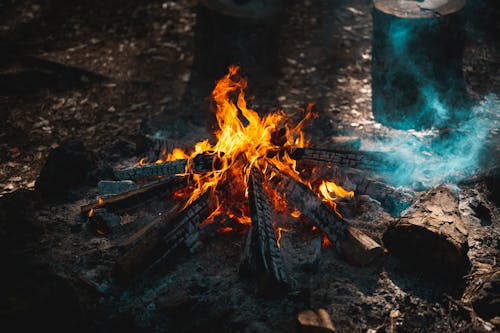
A lot of campgrounds ban bringing your own firewood, even if it’s seasoned and clean. This isn’t them being picky—it’s because pests like the emerald ash borer can hitch a ride in the logs. Once they infest the trees on the property, the damage can be permanent. It’s a state-level rule in some areas, but other parks enforce it voluntarily to protect their environment.
Instead, they’ll ask you to buy wood on-site or from a local vendor they recommend. While it can cost more, it ensures the wood is safe for the area’s ecosystem. If you show up with your own stash, you may be told to keep it sealed or even turn it in. It’s a classic case of “better safe than sorry” for nature’s sake.
3. Outdoor Rugs on Grass

You might think an outdoor rug is the perfect way to keep dirt out of your RV, but some parks say no. Grass damage is the main concern—rugs can block sunlight and kill the turf underneath. Parks spend a lot of money keeping grass lush, so bare patches aren’t something they want to see. It’s especially enforced in high-traffic spots near communal facilities.
Some parks make an exception for breathable mesh mats that let light through. Others may only allow rugs on gravel pads or paved sections. If you don’t ask first, you could find yourself being told to pack it up mid-trip. That can be a headache if you’ve already set up your whole outdoor seating area.
4. Large Tents Beside Your RV

Many parks don’t mind a small shade tent or pop-up, but large camping tents are another story. They can take up extra site space, which is limited in RV parks. Some managers worry it invites more guests than the site is designed for, increasing noise and crowding. Plus, large tents can obstruct the tidy, uniform look parks aim to keep.
If you have extra family visiting, they may be asked to rent their own site. Some parks strictly allow only RV sleeping arrangements for overnight guests. Even if you plan to use the tent for storage, staff might see it as a violation. It’s best to clear it with the office before bringing one.
5. Washing Your RV at the Site

It might seem harmless to give your rig a quick rinse, but many parks won’t let you. Water usage is the biggest concern—especially in drought-prone areas. It can also create muddy, slippery patches around your site. On top of that, detergent runoff can harm landscaping or nearby water sources.
Some parks offer a designated wash station or partner with mobile detailing services instead. If you’re caught washing at your site, you might get a friendly reminder—or a fee. This rule is especially strict in regions where water is tightly regulated. You’ll save yourself trouble by asking about it before packing your bucket and hose.
6. Generators During Quiet Hours

Most RV parks have quiet hours, often between 10 p.m. and 7 a.m., and that usually includes banning generator use. The reason is simple: generators are noisy, and sound carries far in an open campground. Even small, “whisper-quiet” models can disturb light sleepers nearby. It’s not just about politeness—it’s part of preserving the peaceful atmosphere that guests expect.
If you rely on your generator for power, this can be a problem in non-hookup sites. Some parks have limited “generator hours” during the day for off-grid campers. You might need to invest in extra battery storage or solar panels to get through the night. Planning ahead will save you from uncomfortable surprises.
7. Hanging Hammocks Between Trees
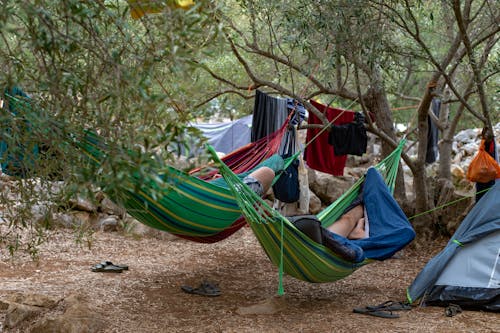
Hammocks feel like peak camping relaxation, but some RV parks quietly ban them. The main concern is damage to trees—ropes can strip bark and weaken trunks. There’s also liability if a guest falls or the hammock setup fails. Parks with older or ornamental trees tend to be the strictest about this.
Some will allow hammocks if you use tree-protection straps or a free-standing frame. Others have designated areas where hammocks are fine. Without asking, though, you could be told to take it down right after you get comfy. That’s a mood-killer you can avoid by checking the rules first.
8. Excessive Outdoor Lighting
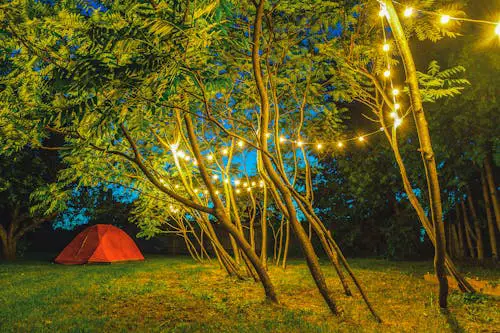
String lights and glowing decor can make a campsite feel magical, but they’re not always welcome. Light pollution is a growing concern, especially in parks near stargazing areas. Bright lights can also bother neighbors who prefer a dark, natural night sky. Some parks have wildlife nearby, and artificial lighting can disrupt their behavior.
You might be limited to low-intensity, warm-colored lights or motion-activated fixtures. Solar lanterns are often fine, but full-blown light displays can get shut down fast. If in doubt, keep it subtle and focus on functionality over flashiness. You’ll still set a cozy mood without violating the rules.
9. Feeding Wildlife

Offering snacks to ducks, squirrels, or deer might seem harmless, but most RV parks ban it outright. Human food can make animals dependent and alter their natural behaviors. It can also attract pests like raccoons or even bears, which creates safety issues for everyone. Once an animal associates people with food, they’re harder to keep away.
Some parks have had to remove animals entirely because of overfeeding by guests. Even bird feeders can be restricted if they draw unwanted critters. The safest way to enjoy wildlife is from a distance, with binoculars or a camera. This keeps both you and the animals healthier and safer.
10. Extra Vehicles Beyond the Limit

Most RV sites have a one- or two-vehicle limit, and going over it can cause friction. Space is tight, and extra cars can block emergency access or crowd nearby sites. It’s also about wear and tear on roads not designed for heavy traffic. Some parks even charge per extra vehicle to control congestion.
If you’re traveling in a group, you may need to park overflow vehicles in a designated lot. This can mean a short walk back to your RV, which isn’t ideal in bad weather. It’s best to coordinate vehicle needs when booking your site. That way, you won’t arrive to an awkward “where should we put this?” situation.
11. Clothes Washing in Restroom Sinks
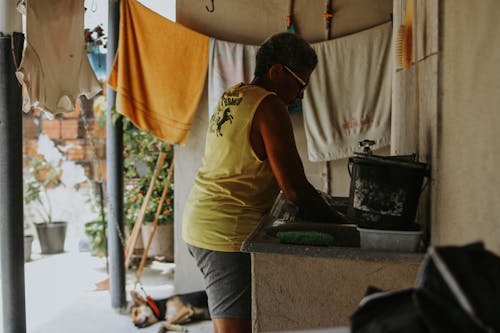
While it’s tempting to rinse out a shirt or two in the campground restroom, many parks forbid it. Restrooms aren’t equipped for laundry, and the extra lint and soap can clog plumbing. It can also be unsanitary for other guests using the sinks. Management prefers you use coin-operated machines or nearby laundromats.
Some parks even post signs explicitly banning “dish or clothing washing” in sinks. The rule isn’t just picky—it’s about keeping facilities clean and functional for everyone. If you’re in a pinch, ask the office for alternatives before trying it. They might point you to a local service that saves you trouble.
12. Large Propane Fire Pits
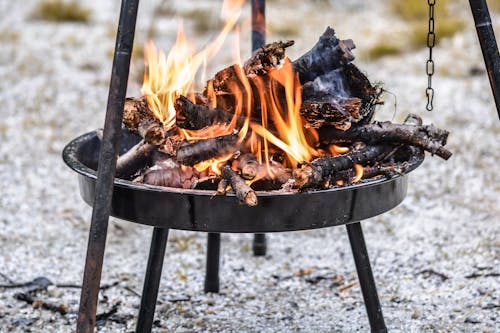
While portable propane fire pits are often welcome, oversized ones can be a problem. They can produce excessive heat and pose a fire risk if the area is dry. Some parks also restrict them because they consume too much fuel in a short time, which isn’t eco-friendly. Even with propane, the size matters for safety compliance.
If you’re bringing one, check the BTU output against park guidelines. Smaller models are usually fine, especially if they sit off the ground. You don’t want to unpack a giant setup only to be told it’s unsafe. In wildfire-prone areas, even propane fires can be completely banned during certain months.
13. Satellite Dishes on Poles

Many RVers like to set up a freestanding satellite dish for better reception, but some parks won’t allow poles in the ground. The main issue is damage to landscaping and underground utilities. Driving a stake or pole into the ground can hit irrigation lines or wiring. It also makes the site harder to maintain between guests.
Roof-mounted or portable, ground-level dishes are usually fine. If you need a pole for signal, you’ll have to get creative with a tripod setup instead. Park staff can often suggest the best placement for clear reception. It’s one of those little rules you won’t find out until you ask.
14. Large Inflatable Pools

A kiddie pool for cooling off sounds innocent, but large inflatables often get banned. They use a surprising amount of water, which some parks want to conserve. There’s also the issue of drainage—when you dump the water, it can flood your site or your neighbor’s. Slippery mud patches can create slip hazards for guests.
Some parks only allow very small pools that can be filled and emptied quickly. Others may require you to use a shared swimming facility instead. If you’re traveling with kids, it’s worth confirming before bringing one. That way, you avoid disappointed little faces on a hot day.
15. Unapproved Mail Deliveries

Many RVers get packages on the road, but some parks ban personal mail delivery entirely. It’s partly about liability—if something gets lost or stolen, they don’t want responsibility. It can also create storage headaches in small offices not set up for handling multiple deliveries. In high-season, the volume of packages can get overwhelming.
If you need to receive mail, parks may direct you to a local post office or package locker. Some will allow it only for long-term guests and with prior approval. Without checking, you might find your package refused or returned. Planning ahead keeps your must-have deliveries on track.
This post 15 Items RV Parks Quietly Ban (But Won’t Tell You Until You Arrive) was first published on Greenhouse Black.
